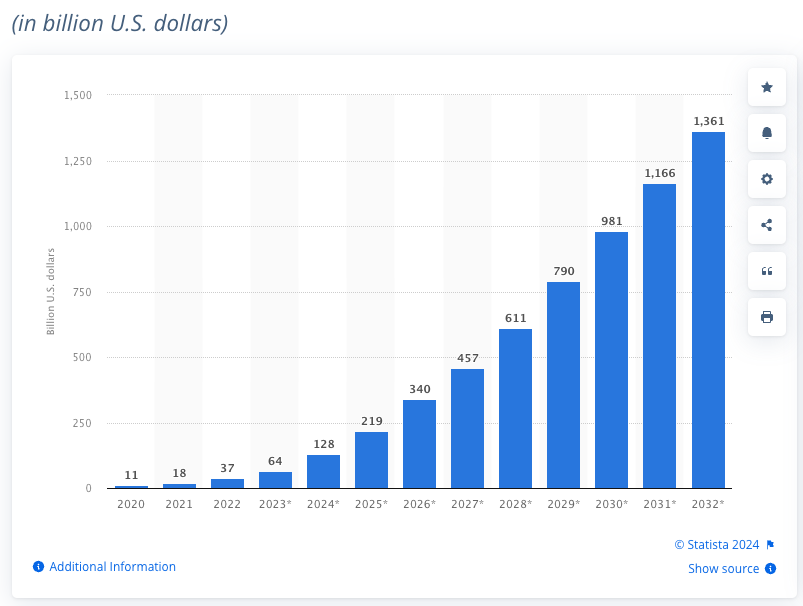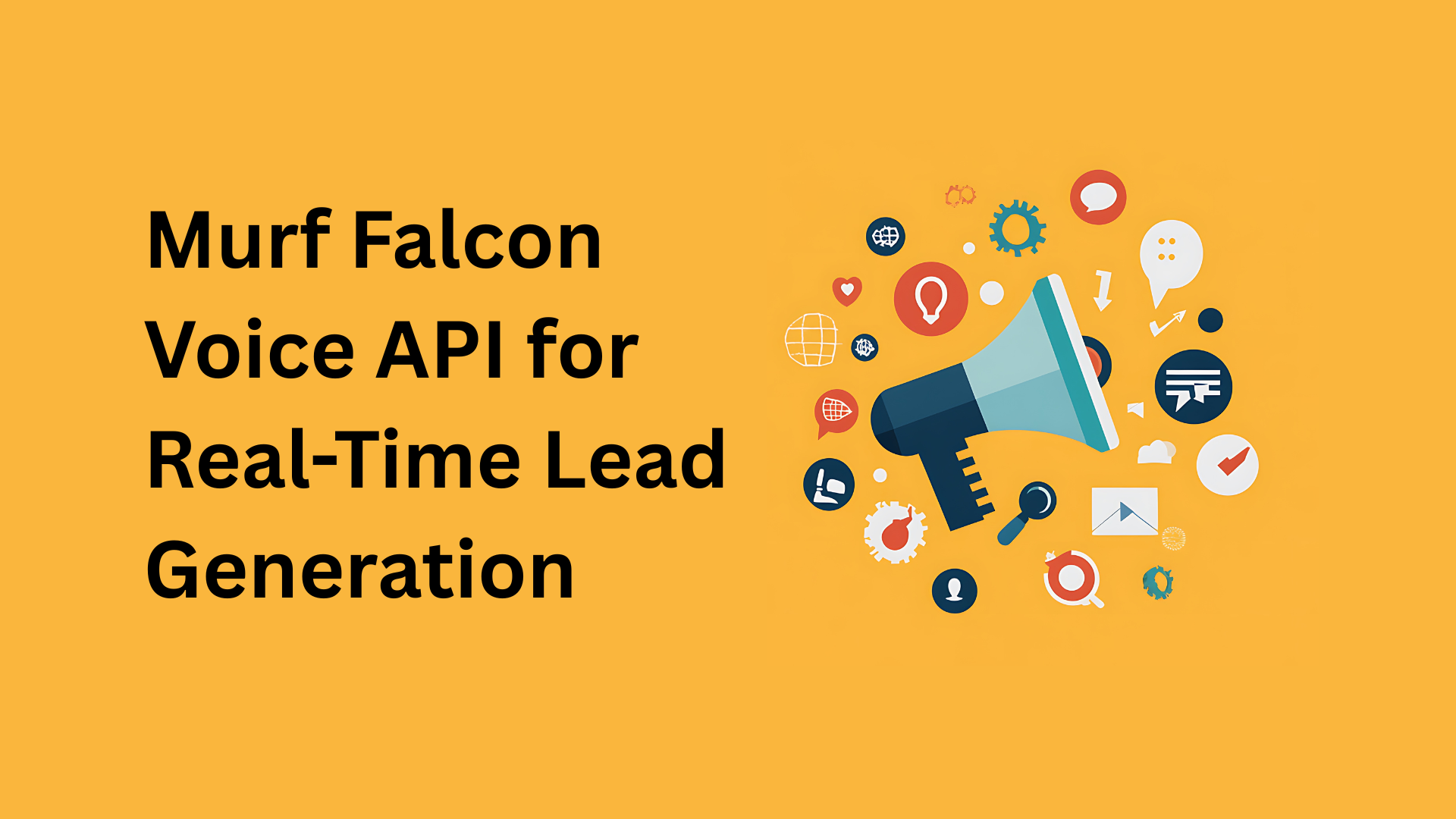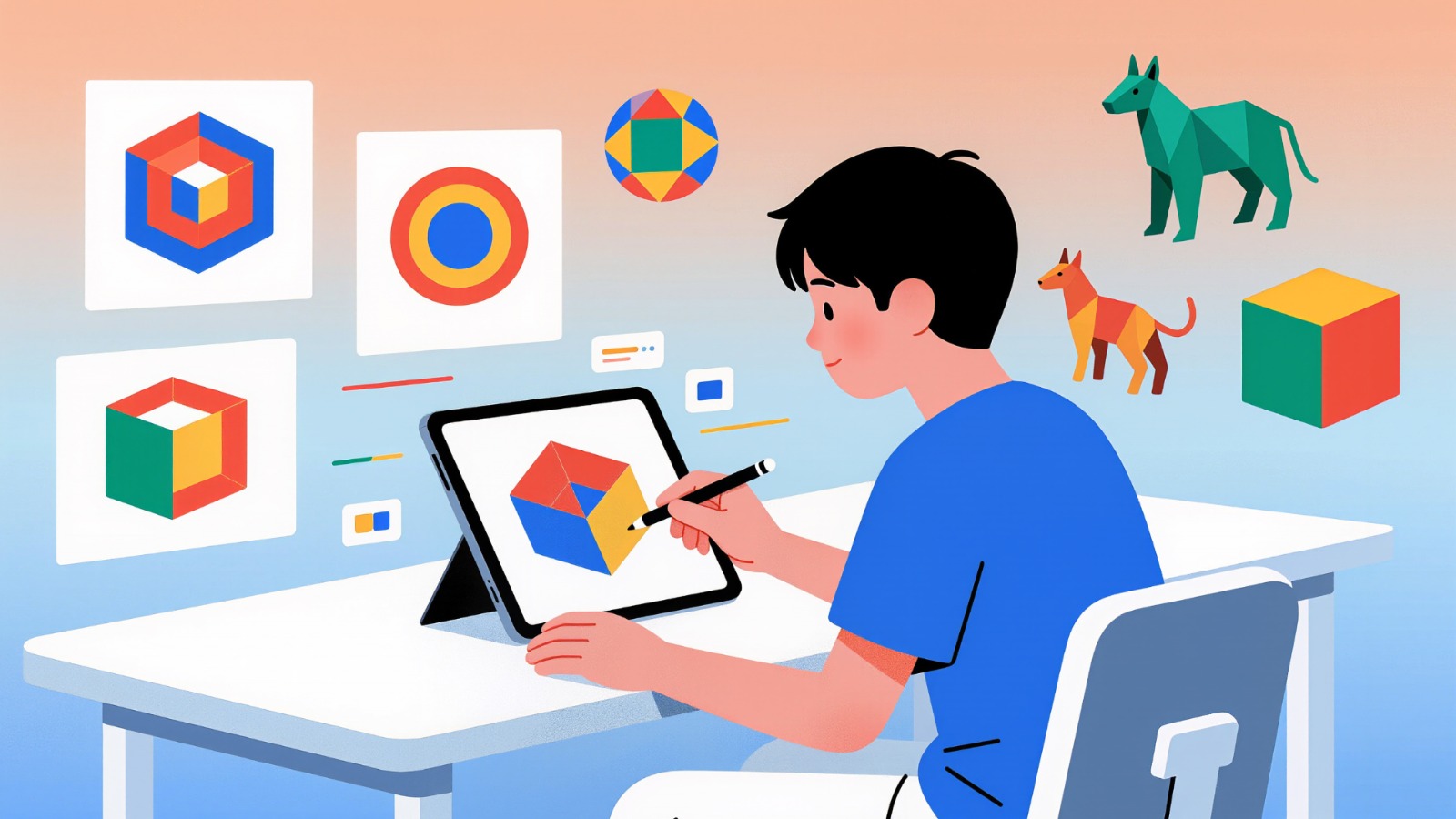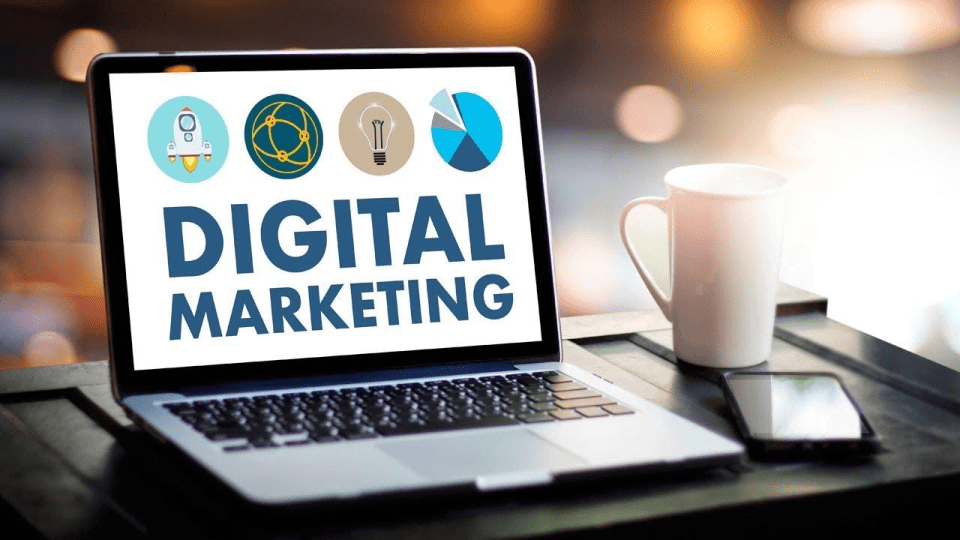Software-as-a-service (SaaS) lead generation evolves fast. Its growth comes from technological advancements and changes in customer expectations.
Let’s explore the future of SaaS lead generation to learn more about these changes. We’ll also share some application examples illustrating how these changes will unfold.
The Evolution of SaaS Lead Generation
Lead generation is the most important element driving growth for SaaS companies. Historically, it involved outbound strategies like cold emails and inbound tactics like content marketing.
But times are changing and the future of SaaS lead generation is here. Why? The lead generation process now includes the integration of cutting-edge technologies like:
- High-level personalization;
- Artificial intelligence (AI);
- Data-driven strategies;
- Automation;
- Analytics;
- and others.
In fact, the generative AI market will hit new heights in 2024, estimated to reach nearly $128 billion. The use of AI in business is at its all-time high, but it will continue to grow over the next few years.

Follow these new AI trends to understand how they work to better align your campaign. For example, if you can scale your campaign’s personalization with AI, go for it.
Bear in mind that different tools will provide different results. Thus, it is essential to know which tools to choose and the ideal customer profile.
Implement these new SaaS lead generation technologies today to stay ahead of the curve and land qualified leads (before they find their way into the open arms of your competition).
Let’s jump into it all.
Personalization at Scale
Nowadays, potential clients demand more personalized experiences. SaaS companies need to figure out ways to meet these changes in consumer needs. For example, you could leverage advanced tools to deliver valuable content, various offers, and communications tailored to individual prospects.
Generating potential leads is a big challenge for many companies. Sometimes, traditional methods tend to fall short. Thus, leading businesses must explore new strategies—often with the support of a SaaS marketing agency that understands personalization. These new approaches will help them reach new, quality leads.
Example of future applications:
- Dynamic content generation: Future SaaS platforms can use AI to generate personalized content. This content will use real-time data from customer interactions. For instance, a SaaS company could deliver custom reports or recommendations, tailor-made for the specific needs and behaviors of the target audience.
- Predictive personalization: AI and ML will have great predictive powers. They will predict the type of content qualified leads might respond to, thus creating hyper-targeted marketing campaigns. These could include personalized landing pages that can adapt to a visitor’s industry or company size.
AI and Machine Learning in Lead Generation
AI and machine learning are set to play pivotal roles in SaaS lead generation. This technology provides deeper insight into behavioral patterns and automates the decision-making process.
A 2023 survey revealed that 60% of senior B2B/B2C executives use AI for lead identification. These numbers will only grow in the future, making AI one of the most used tools in lead generation today.
On the other hand, ML algorithms are becoming more sophisticated. This allows companies to better understand customers' behavioral patterns. It’ll also help predict lead outcomes better and automate complex tasks.
Example of future applications:
- Chatbots with enhanced AI capabilities: Chatbots will become even more sophisticated. They can handle complex queries and provide real-time, personalized responses. For example, a future SaaS lead generation process might involve AI-powered virtual assistants. They could schedule demos, answer detailed product questions, and negotiate pricing.
- Advanced Predictive Lead Scoring: ML could help enhance predictive lead scoring systems. Unlike advanced systems, traditional lead scoring relies on a predefined criteria set. On that note, ML-powered systems will continue to learn and adapt based on new data. These systems will analyze a vast array of variables. Key components include behavioral patterns, engagement history, and external data. All this will help predict which leads are most likely to make a buying decision.
Automation and Workflow Optimization
Automation will continue to streamline SaaS lead generation processes. It will also help reduce the manual workload, improve efficiency, and provide detailed analytics.
Example of future applications:
- AI-enhanced CRM automation: Future CRMs could incorporate AI that is capable of doing many things. It could automate routine tasks and provide actionable insights. For example, it could suggest the best time to follow up with a lead based on their past interactions. It could also predict the likelihood of a sale closing based on similar historical data.
- End-to-end lead nurturing: Future automation platforms could manage the entire lead nurturing process, which begins with the initial contact and ends with the final sale. This is helpful as it requires minimal human intervention in sales efforts. Besides, you could do more. You can include dynamic email sequences to adjust content and timing. These sequences work based on how leads interacted with previous communications.
The Role of Content Marketing
Quality content marketing will remain a cornerstone of SaaS lead generation. Companies will define the future of this method based on how they prefer to use their content.
However, compelling content to engage and convert potential customers is a good strategy throughout each stage of the sales funnel.
Example of future applications:
- Accessible content: Consider using an AI voice generator in your content strategy. It’ll help make your valuable content more accessible, allowing you to reach a wider audience. Potential customers include those with visual impairments or busy professionals. Some customer types may prefer to listen rather than read. If you offer audio content, you can engage users in new ways. This will improve user experience and keep target audiences on your platform longer.
- Augmented reality (AR) and virtual reality (VR) Content: AR and VR are blossoming and continue to make waves in the industry. This means some SaaS companies might offer interactive demos or immersive content experiences. These will allow potential customers to explore the product in a more engaging way. For example, a company offering project management tools could create a VR environment so users could test simulated project scenarios.
Data Privacy and Compliance
Data-driven lead generation is becoming more sophisticated. Thus, ensuring data privacy and compliance will become essential. As a SaaS company, you will need to focus on transparent and secure data practices to maintain client confidentiality and trust.
Example of future applications:
- Blockchain for data security: Blockchain technology is a great way to secure customer transaction data. This could include blockchain-based systems for managing consent. But it would also allow us to track the use of customer data.
- Automated compliance tools (ACT): Let’s say your company’s marketing campaign spans many countries. Well, all of these countries have different data privacy laws. That’s where ACT can help. The system could tailor data collection practices to meet local requirements.
The Rise of Account-Based Marketing (ABM)
Account-based marketing (ABM) will gain even more traction in the SaaS industry. This is especially true if you consider your main goal as an organization. This goal is to target high-value accounts with personalized campaigns.
Example of future applications:
- AI-Powered ABM Campaigns: Future ABM strategies involve a dynamic AI. This AI can adjust marketing content and tactics. The content and tactics are the real-time data from target accounts. For example, an AI system could detect when a target account engages with a specific content. Its automation process will send a tailored follow-up email. It could also alert the sales team to reach out with a personalized offer. This will help build more meaningful relationships.
- Multi-channel ABM orchestration: Advanced ABM platforms can coordinate campaigns using a multi-channel approach. This approach uses email, social media, direct mail, and more in real time. For instance, let’s say a target account interacts with a social media post. In this case, the system could trigger a sequence of personalized emails and ads. All these will be tailored to that account’s specific needs and behaviors.
Social Media and Influencer Marketing
Social media will continue to be a vital channel for SaaS lead generation. We may see an increasing emphasis on influencer marketing and targeted social ads.
Example of future applications:
- Influencer-led campaigns with AI: Future influencer marketing campaigns might use AI-powered systems. These will identify the most relevant influencers for a specific audience. Also, they’ll predict the likely ROI of collaborating with those influencers. For example, an AI platform could analyze social media trends and engagement data. Thus helping recommend influencers whose audience aligns with the company’s target market.
- Hyper-targeted social ads: Advances in AI and ML will bring new capabilities. They’ll enable SaaS companies to create hyper-targeted social media ads. These ads will adapt in real-time based on user interactions. Let’s say a user watches a product demo video on LinkedIn. They might immediately see follow-up ads. These ads could offer a free trial or a case study relevant to their industry.
That’s where a powerful solution like AdTech stands out compared to Martech. AdTech uses advanced targeting and data analytics to reach the right audience at the right time, making your marketing efforts more efficient.
By leveraging these tools, SaaS companies can improve their lead generation efforts. This will ensure that they attract and convert more high-quality leads.
Preparing for the Future of SaaS Lead Generation
As SaaS lead generation continues to evolve, keep a close eye on these trends. Embracing the new approach will help you to attract, engage, and convert leads.
The future of SaaS lead generation will have a new stamp. This stamp will represent a more personalized and data-driven approach to prospective clients.
Advanced features like advanced analytics, automation, and AI are crucial. Do not wait to take advantage of these trends today, or you risk falling behind.
By staying ahead of these trends, you will ensure you’re prepared to meet any change in consumer demands. Driving continuous growth through innovative lead-generation strategies is vital to your long-term success.










